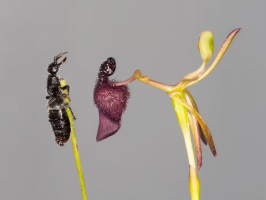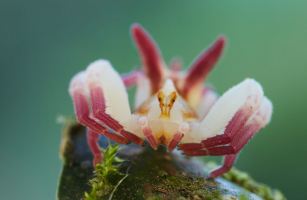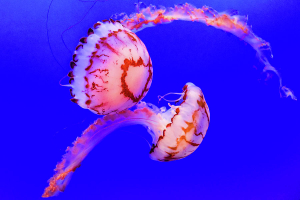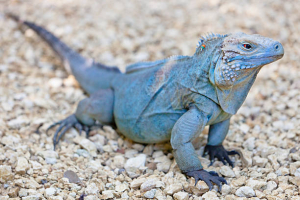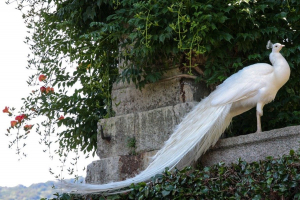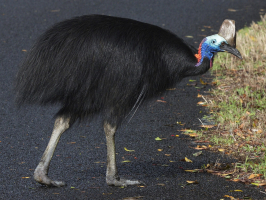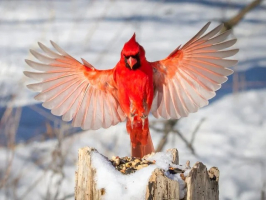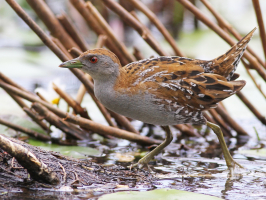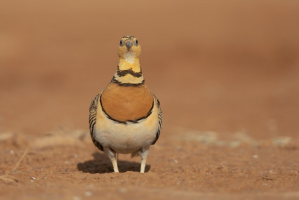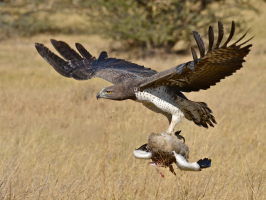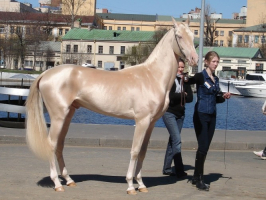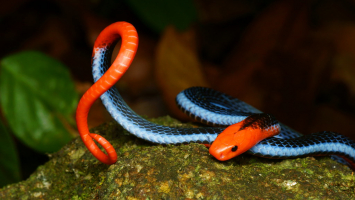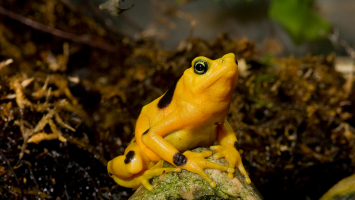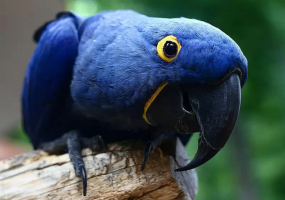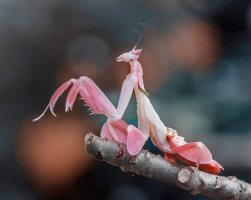Top 10 World's Most Beautiful Purple Birds
Although the color purple is believed to be a rare color by nature, one could be surprised to discover that there exist birds across the globe who sport these ... read more...stunning royal-colored feathers. Even though there isn't a single bird that is wholly purple from head to tail, that color will stand out more than the rest color. Below is a list of the most beautiful purple birds in the world, let's find out!
-
The Splendid Sunbird (Cinnyris coccinigastrus) is a sunbird. The sunbirds are a small group of old-world passerine birds that mostly eat nectar, though they will occasionally eat insects, especially while feeding their young. On short wings, they fly swiftly and directly. While most species are capable of sucking nectar while hovering like hummingbirds, they typically perch to eat most of the time. The splendid sunbird breeds in the west and central tropical Africa. In an oval-hung nest in a tree, one or two eggs are placed. Within its range, it is a seasonal migratory.
The 15 cm long splendid sunbirds have medium-length thin down-curved bills and brush-tipped tubular tongues, both nectar-eating adaptations. The adult male has a dark green back and wing bar, and a crimson breast patch, and is primarily glossy purple in color. The female is yellowish below and greenish-brown above. This species is a common breeder in wet savannah and woodland with oil palms, Elaeis guineensis. Incisions made in the trunk of the latter produce sap, which is used to manufacture palm wine.
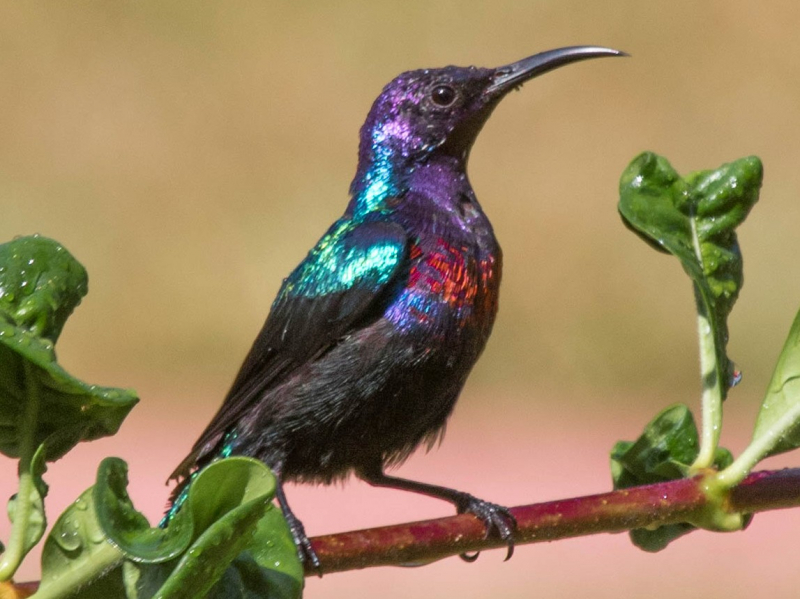
eBird 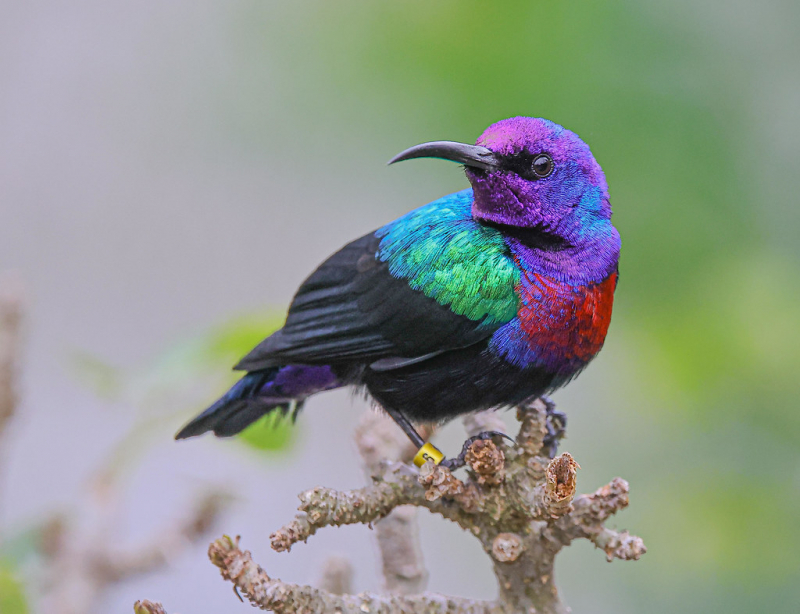
Flickr -
The Purple Martin (Progne subis) is a passerine bird in the swallow family Hirundinidae. It is the largest swallow in North America. The purple martin is not actually purple, despite its name. The dark blackish-blue feathers seem bright blue to navy blue or deep purple due to an iridescent sheen brought on by the refraction of incident light. They might even appear green in certain lighting.
Their breeding range, which is migratory, stretches from central Alberta to the eastern United States. In Baja California, Arizona, and New Mexico, subspecies reproduce. Prior to arriving at their overwintering location in South America, the majority stay briefly in the Yucatán Peninsula or Cuba during their pre-breeding migration to North America and during their post-breeding journey. They are renowned for their quickness, agility, and distinctive blend of glide and rapid flapping flight patterns. They will plunge from the sky at high speeds with their wings tucked when they are near their nesting location, precisely like the peregrine falcon does when it is hunting smaller birds.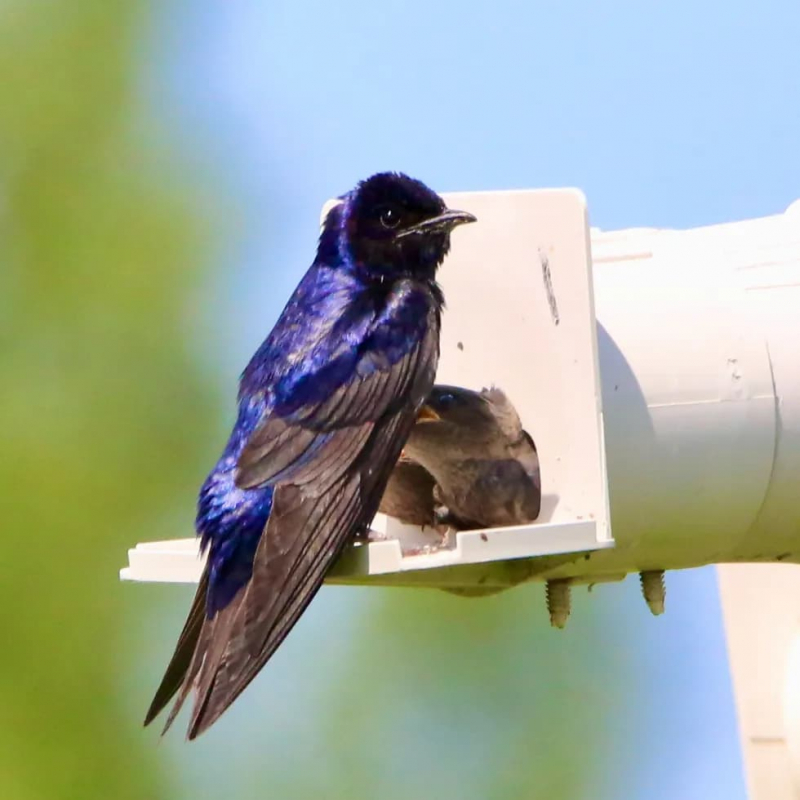
Bird Watching Academy 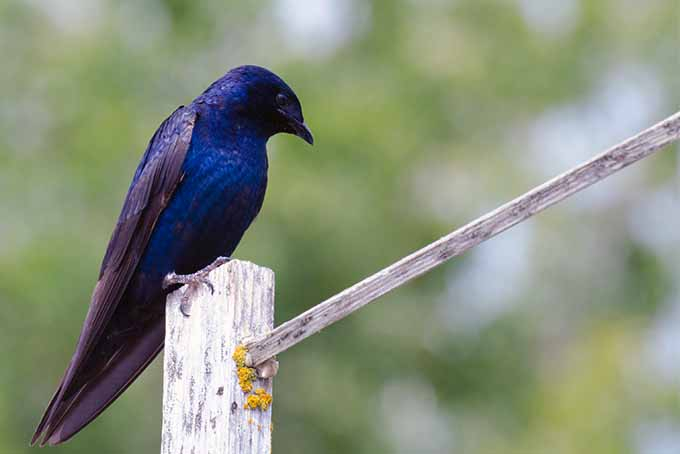
Gardener's Path -
The Violet-Backed Starling (Cinnyricinclus leucogaster), also known as the plum-colored starling or amethyst starling, is a relatively small species (17 cm) of starling in the family Sturnidae. Within the genus Cinnyricinclus, it is the sole species. This species, which exhibits high sexual dimorphism, is widely distributed in the woodlands and savannah forest margins of mainland sub-Saharan Africa.
The male's underparts are entirely white, while his head and back are iridescent violets. With brown, boldly streaked upperparts and white, severely streaked underparts, the female resembles a thrush. Both sexes have black bills and legs and golden irises. The diet of the violet-backed starling includes fruits, seeds, and arthropods. It sometimes hawks for insects in a manner similar to flycatchers. It largely feeds in the canopy, seldom foraging on the ground.

eBird 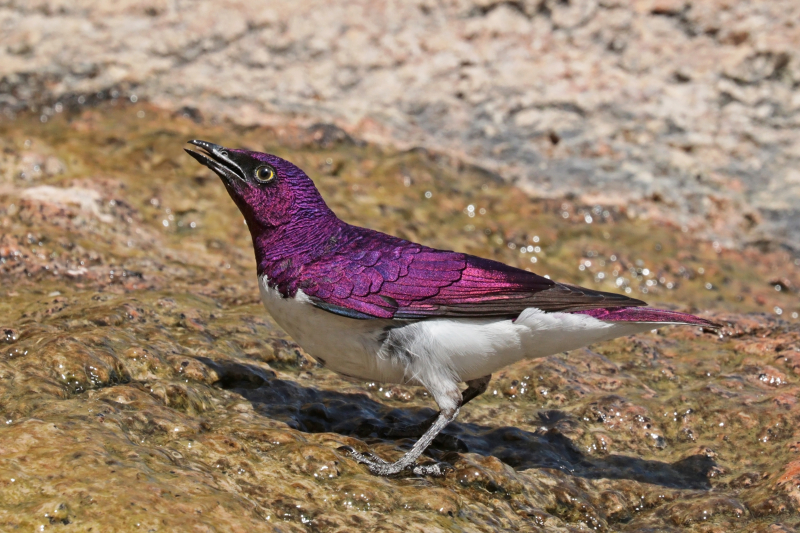
Wikipedia -
The Purple Grenadier (Granatina ianthinogaster) is a common species of estrildid finch. Although Purple Grenadiers are present across Eastern Africa, the best locations to see them are in Kenya, the eastern and southern regions of Ethiopia, northeast Uganda, and north and central Tanzania. Year-round, they are a year-round resident bird species. The desert landscape with acacia thickets, thorny scrub, and occasionally open bushy regions is the habitat these birds favor. They can be located anywhere, from sea level to about 1600 meters in elevation.
The average length is 13.3 cm. Adults have a red bill, and all ages and sexes have a black tail. The male has a neck and head that are cinnamon in color, and an eye patch that is blue. The underparts are violet-blue with varying rufous patches and have a purple-blue rump. The female is smaller, predominantly cinnamon brown, and has silver-blue eye patches and white banding on the underparts. Female-like in appearance, juveniles are primarily tawny-brown with no bars and a reddish-brown bill.
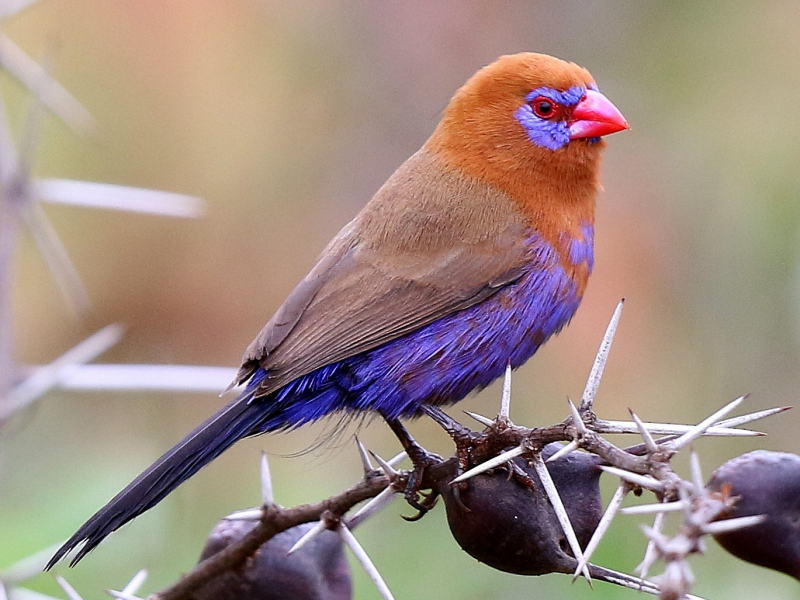
eBird 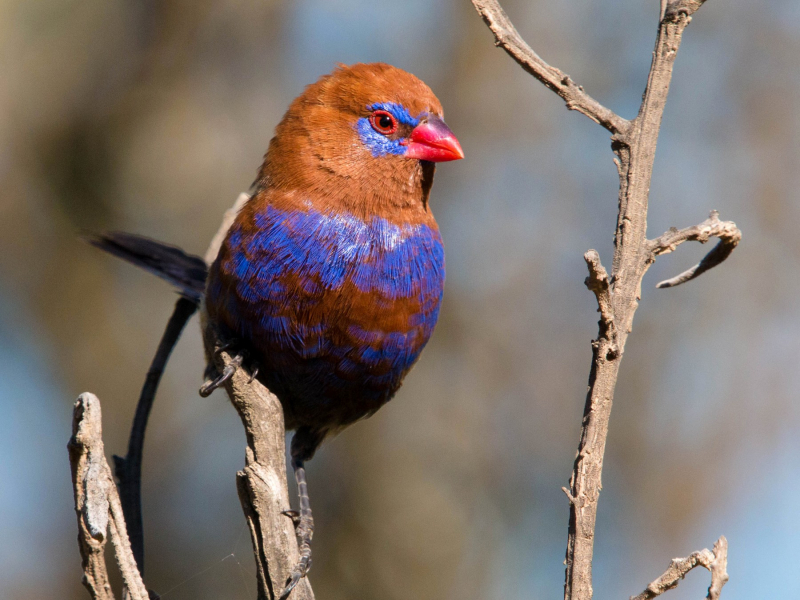
eBird -
The Crowned Woodnymph (Thalurania colombica) is a species of bird in the hummingbird family Trochilidae. It is found in Belize and Guatemala to northern Peru. Its natural habitats are subtropical or tropical moist lowland forest, subtropical or tropical moist montane forest, and heavily degraded former forest.
The crowned woodnymph measures 10.2 cm in length and weighs 4.5 g as an adult. It has a deeply forked blue-black tail with a violet crown, upper back, shoulders, and belly. Its throat, breast, and lower back are bright green. The female is 8.4 to 9.0 cm long and 3.5 g in weight. She has a grey breast and throat and is bright green above and duller green below. Her tail is circular, mostly green close to her body, but it also has white corners and a blue-black lower part. Young males are bronze in color below and lack any violet or iridescence. The feathers on the nape, face, and rump of immature females have buff fringes. The call is a high-pitched fast kip.
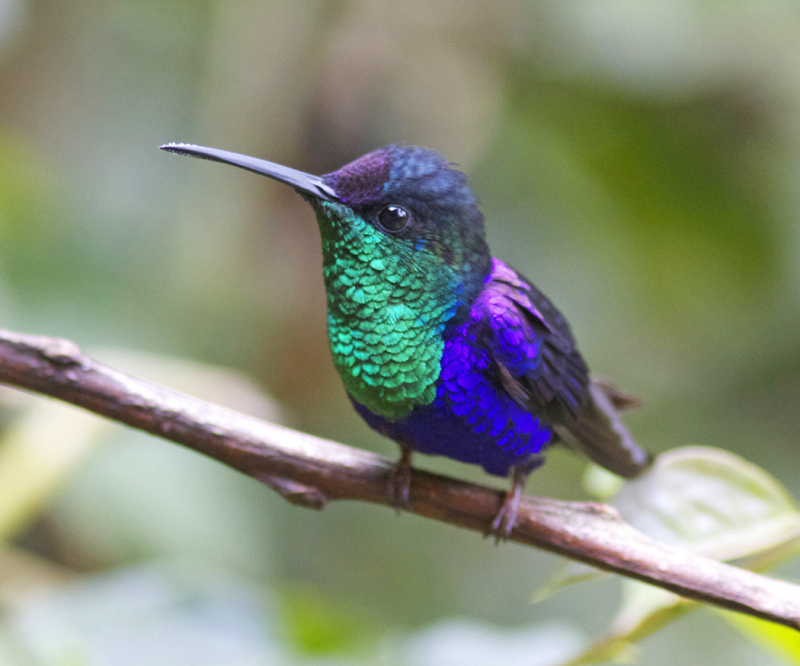
Wikimedia Commons 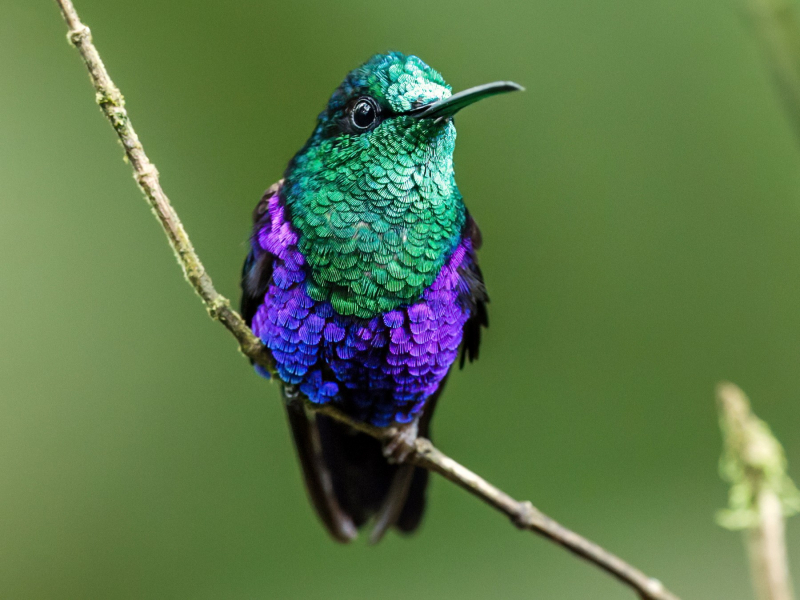
eBird -
The Purple Gallinule (Porphyrio martinicus) is a swamphen in the genus Porphyrio. It is in the order Gruiformes, meaning "crane-like", an order which also contains cranes, rails, and crakes. During the breeding season, these birds can be seen in the southeastern states of the United States. They are a resident species in sections of Central America, the Caribbean, southern Florida, and the Gulf and Pacific coasts of Mexico. They can be found farther inland in regions of Central America during the non-breeding season. During migration, they can also be found in South America, and stray animals occasionally get up as far north as Canada. Freshwater marshes with substantial vegetative cover are the species' natural habitat.
When in good lighting, an adult purple gallinule's purple-blue feathers will reflect green and turquoise. In addition to the red and yellow bill, adults also have a shield with a pale blue border on their foreheads. Darkness or low light can make the adult's vivid purple-blue plumage appear dusky or brownish, but the forehead shield color sets them apart from related species like common gallinules. The bill and forehead shield of immature purple gallinules are pale in color, and they have purple feathers on their breast. Young birds have white under tail coverts and are light brown overall with hints of green-bronze on the wings and back.
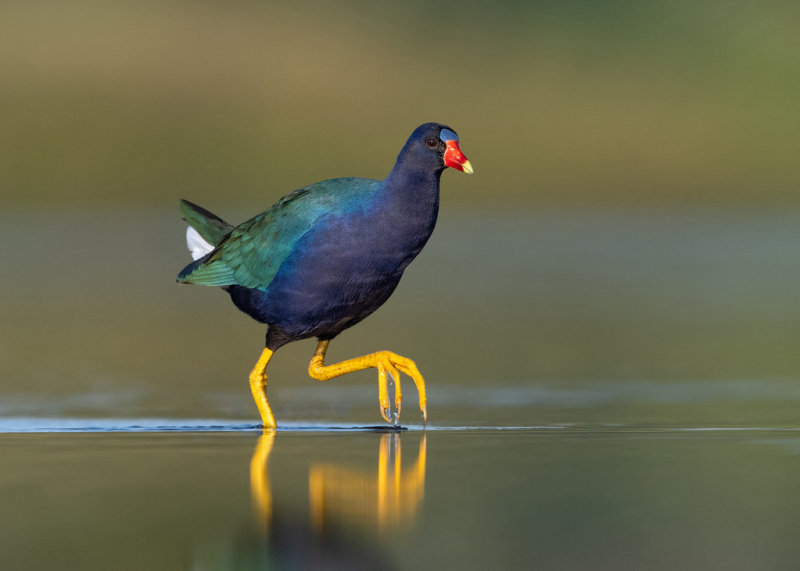
Flickr 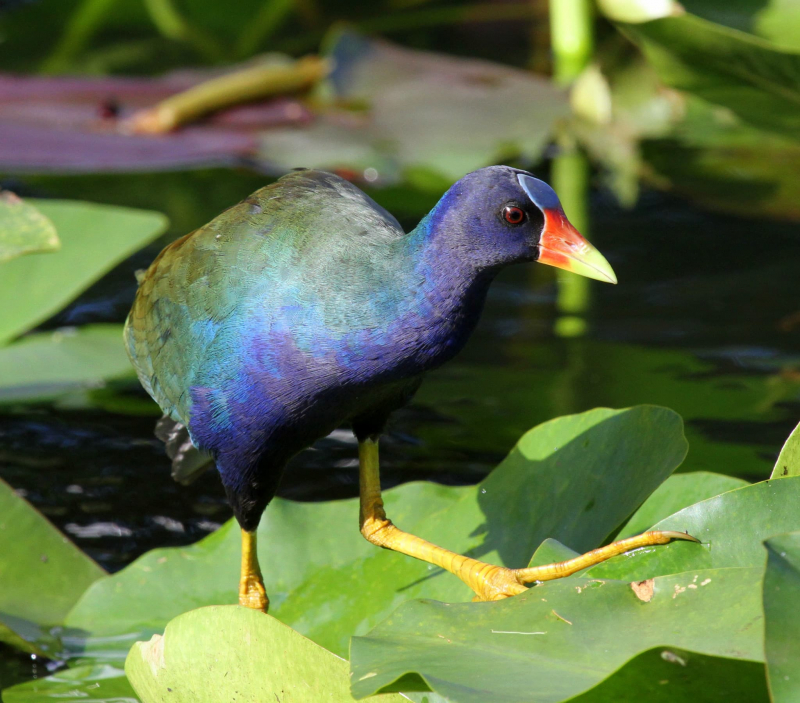
iNaturalist Guatemala -
The Purple Honeycreeper (Cyanerpes caeruleus) is a small Neotropical bird in the tanager family Thraupidae. It can be found across the tropical new world, including Trinidad, and from Colombia and Venezuela south to Brazil. On Tobago, a few birds that may have been introduced have been noted.
The purple honeycreeper has a long, decurved, black bill that is 11.5 cm long and weighs 12 g. The male is purple and has brilliant yellow legs, and black wings, tails, and belly. Females and immatures have green upperparts and underparts with green streaks that are yellowish-buff. There is a blue moustachial line and a cinnamon-colored neck. Purple honeycreeper calls with a thin, high-pitched zree sound. Compared to mainland species, the Trinidadian subspecies of C. c. longirostris has a longer bill.
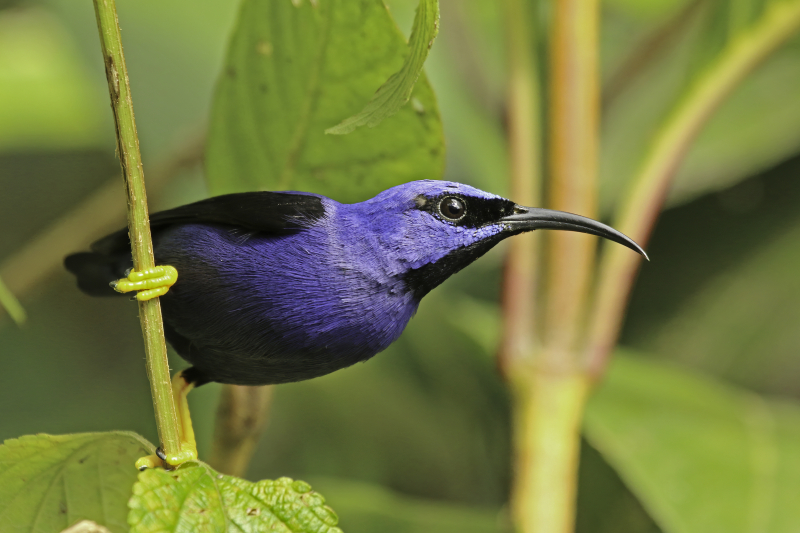
Wikipedia 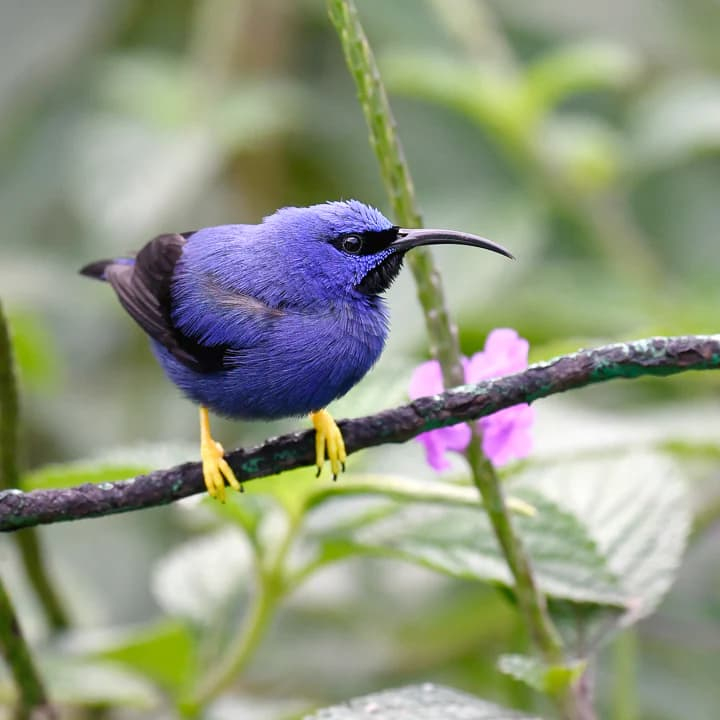
eBird -
The Purple Starling (Lamprotornis purpureus), also known as the purple glossy starling, is a member of the starling family of birds. It is a resident breeder in tropical Africa from Senegal and north Zaire east to Sudan and western Kenya. This common passerine is typically found in open woodland and cultivation.
Purple Starling is a short-tailed, bulky starling. mostly iridescent purple with a greenish back and a massive yellow-orange eye. Typically in huge flocks that frequently contain other species of starlings. The large eye and the profusion of purple in the plumage help to distinguish this starling from other savanna dwellers. The vocalizations range from basic chatters to nasal squeals and liquid whirling sounds.
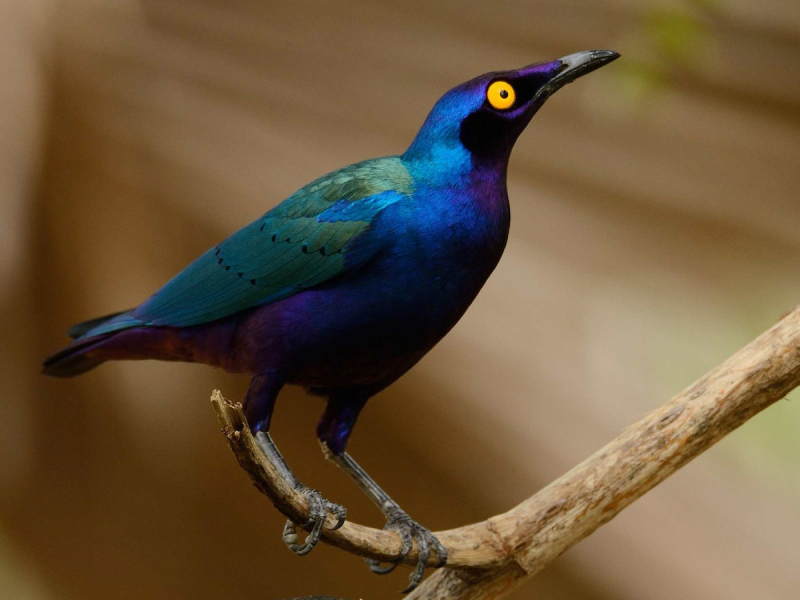
eBird 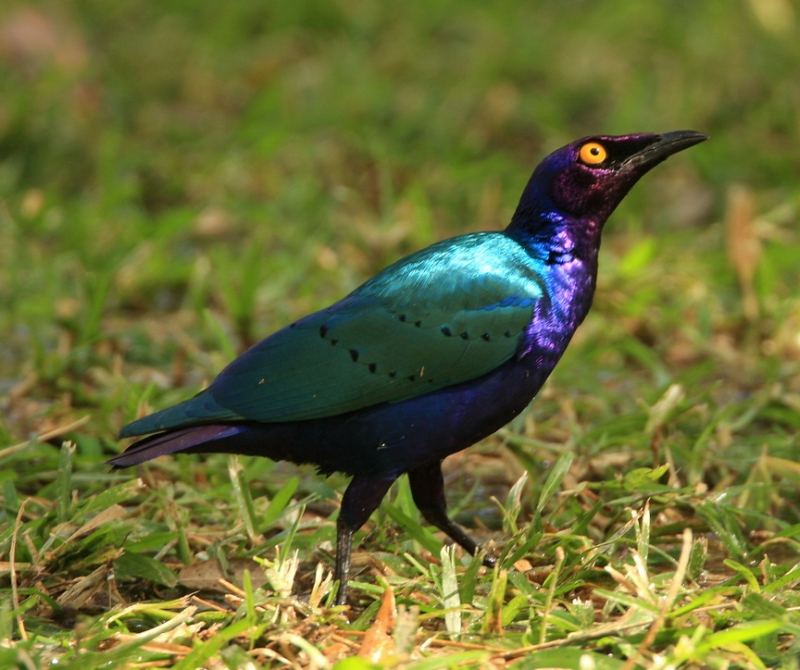
Birds of the World -
The Purple-Crowned Fairywren (Malurus coronatus) is a species of bird in the Australasian wren family, Maluridae. It is indigenous to northern Australia and the largest of the Malurus genus' eleven species. Due to the characteristic purple circle of crown feathers worn by breeding males, the species name is derived from the Latin word cǒrōna, meaning "crown". Genetic evidence shows that the purple-crowned fairywren is most closely related to the superb fairywren and splendid fairywren.
Adult males grow the stunning brilliant purple feathers on their crown during the breeding season. This has a black face mask around it, and the top of the head is topped with an oblong black mark. The male's colorful crown is replaced by grey/brown feathers during the non-breeding season, as does the black mask, which has off-white to pale grey orbital rings and black cheek patches. The mature female, however, differs in that she has chestnut-colored ear-coverts and a greenish-blue tail. Male birds begin to display black feathers on the forehead by six to nine months, although immature birds have duller coloring, a brown crown, and a longer tail.
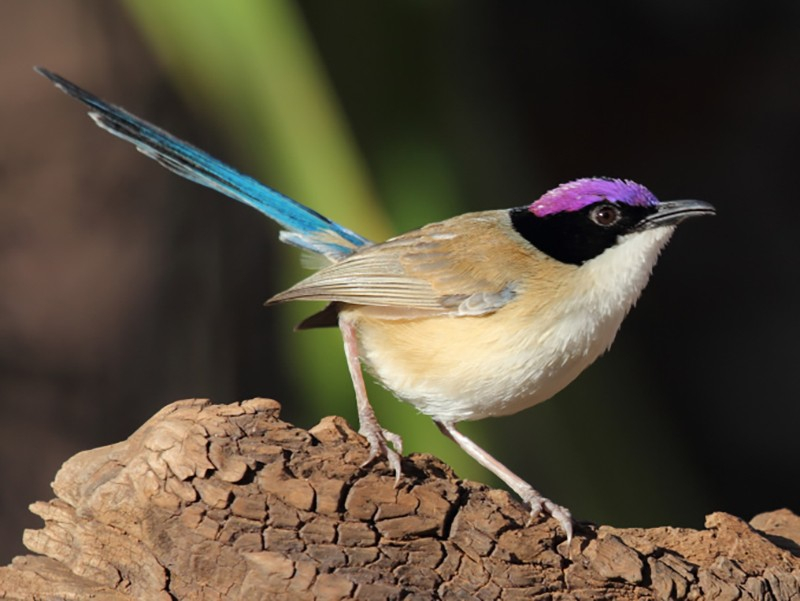
eBird 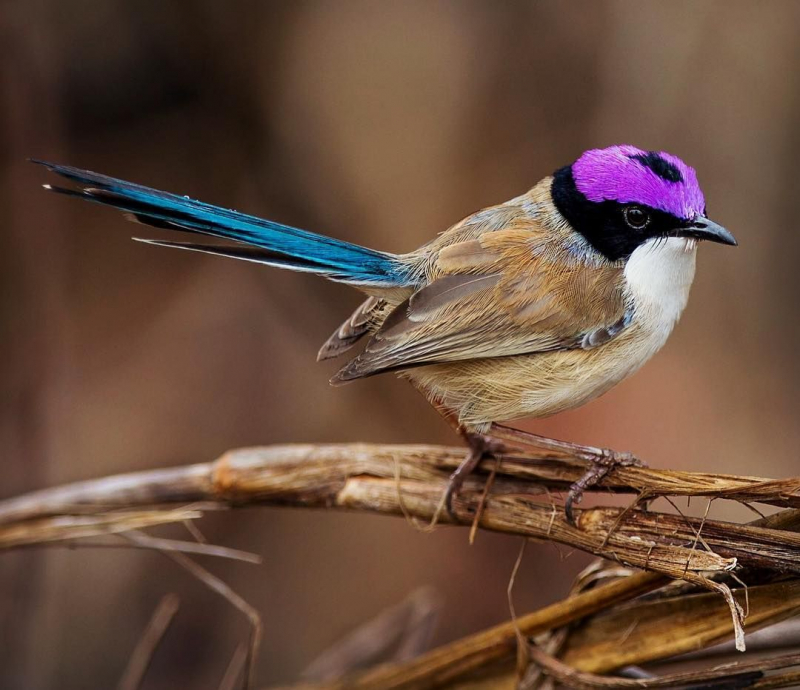
Pinterest -
The Violet Sabrewing (Campylopterus hemileucurus) is a very large hummingbird native to southern Mexico and Central America as far south as Costa Rica and western Panama. It is a species of the understory and edges of mountain forests, especially near streams. The female violet saber wing lays two white eggs in a relatively large cup nest on a low horizontal branch, usually over a stream.
The male violet saber wing measures 15 cm in length, while the female weighs 9.5 g. It is the biggest saber and the biggest hummingbird outside of South America. The adult male has a deep violet color with dark green wings and a back. The characteristic feature that lends the saber wings their English and scientific names is the thickening and flattening of the shafts of the male's outer primary flight feathers. The scientific name for the species, hemileucurus, which translates to "half-white tail", comes from the fact that the three outer pairs of feathers on the otherwise black tail are white. Several other saber wings, including the white-tailed saber wing of Venezuela and Tobago, also have this tail pattern.
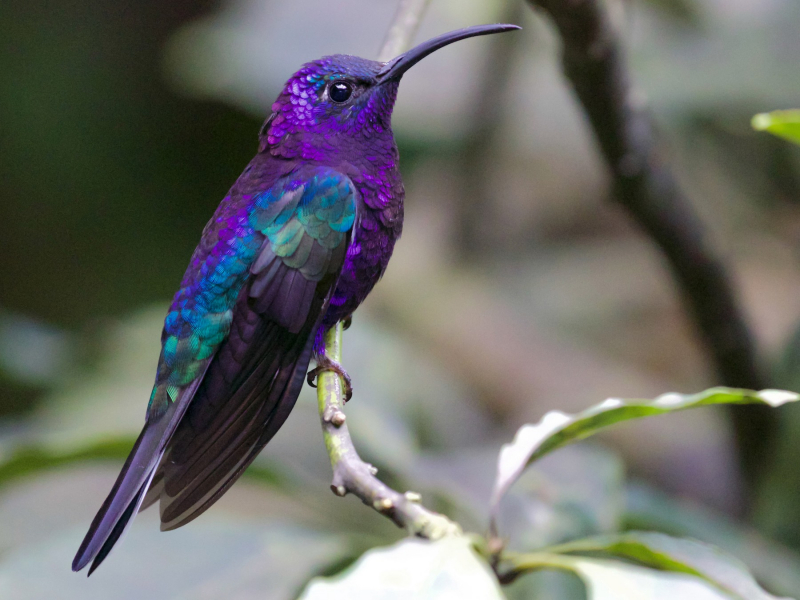
eBird 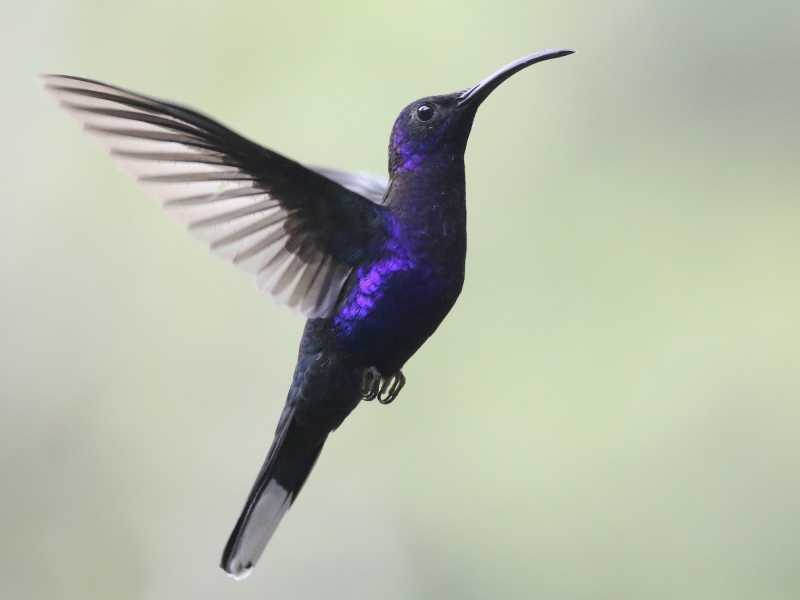
eBird












